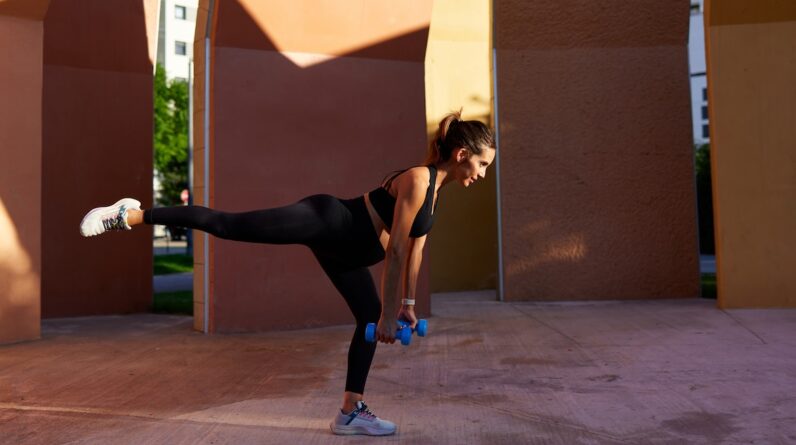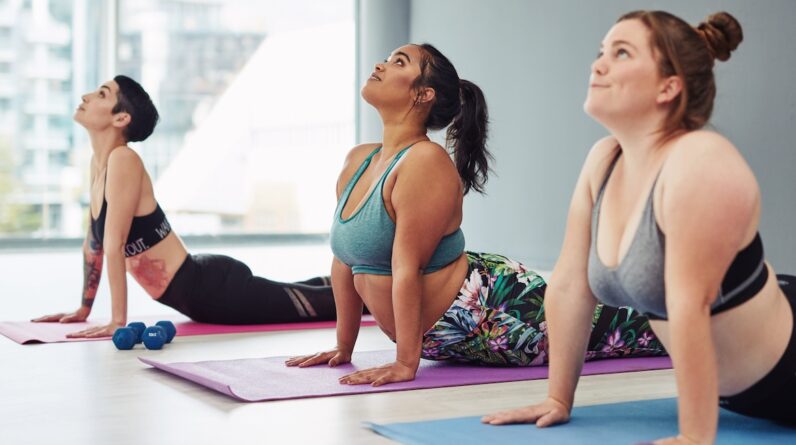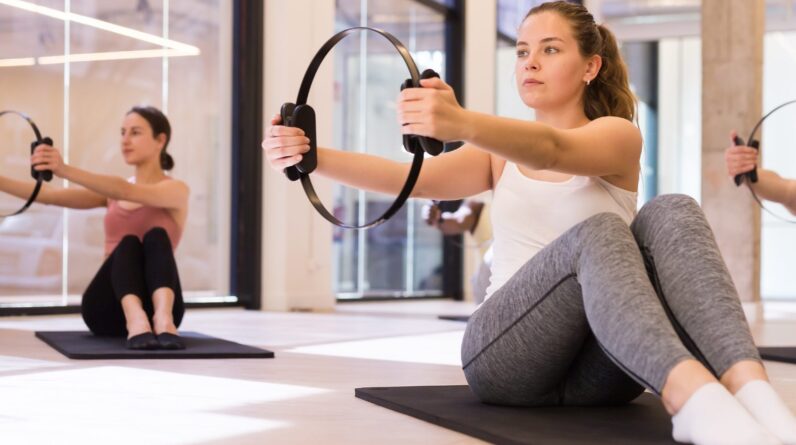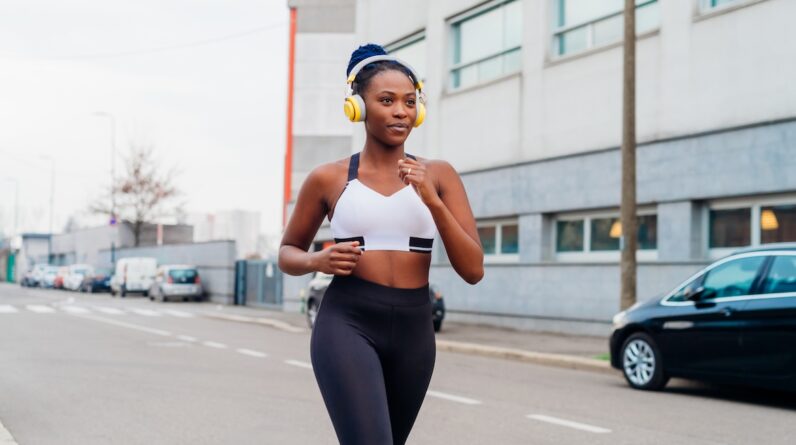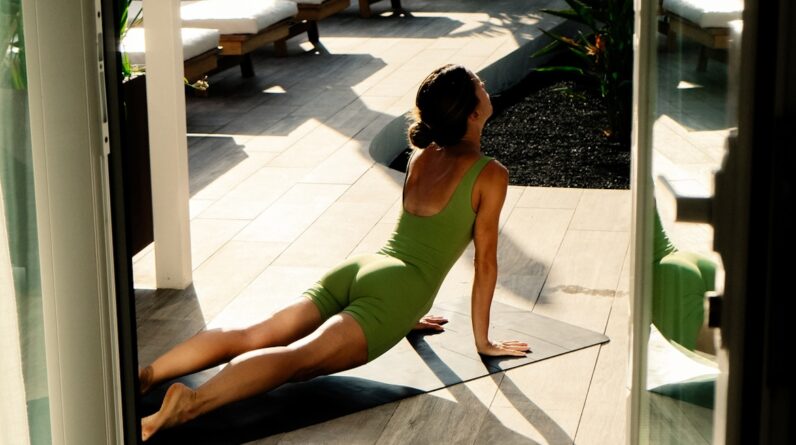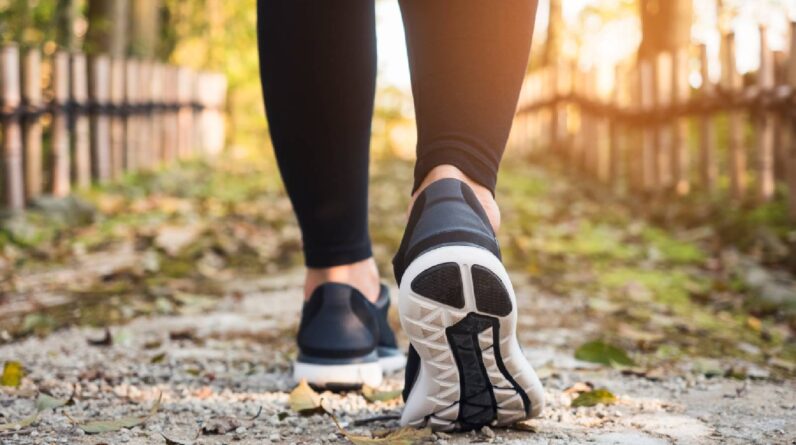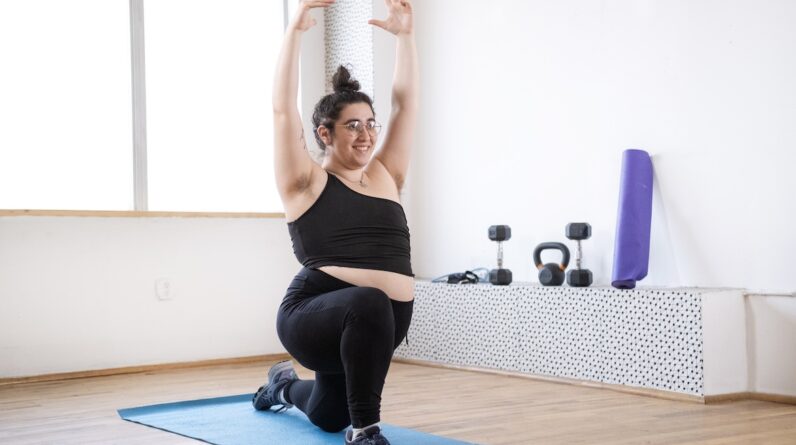
To state what should be obvious: People of all sexualities and genders, bodies, and genitalia deserve access to safe and affirming fitness spaces.
Exercise, after all, is linked with improved mental and physical health outcomes, which LGBTQIA+ individuals experience at higher-than-average-rates, according to a 2021 research review in Health SA.
Not to mention, most fitness spaces are meccas for community, which is an essential ingredient for obtaining a sense of belonging and acceptance, says Jesse Kahn, LCSW, CST, a queer sex therapist and director of The Gender & Sexuality Therapy Center in New York City.
An LGBTQIA+ inclusive and safe fitness space is one that sees LGBTQIA+ individuals’ humanity, says certified sex therapist Rae McDaniel, LCPC, CST, author of Gender Magic and CEO and founder of Practical Audacity. It’s a space where someone represented by any one of the letters in the acronym knows they’ll be respected by staff as well as fellow gym-goers, they say. “It’s a place that’s free from the threat of harassment, discrimination, microaggressions, or harm.”
Thankfully, some gyms and studios are starting to implement improvements that make their fitness spaces more explicitly LGBTQIA+ inclusive. Case and point: Peloton now has a non-binary gender option, Planet Fitness policy allows users to use the locker room they feel best corresponds with their self-reported gender, and most Central Rock Gym locations host a monthly (or weekly!) LGBTQIA+ night.
Unfortunately for the estimated 7.1 percent of the US-based adults who are LGBTQIA+, progress is slow and not every fitness space is currently a safe space for LGBTQIA+ folks And discerning which fitness spaces are—and are not—queer-friendly requires some savvy from queer people themselves.
Here to guide you are tips from LGBTQIA+ fitness and wellness pros on how to find a fitness space that doesn’t just tolerate, but celebrates, your very being.
7 ways to tell if a space is queer-inclusive
The real onus is on fitness facilities and professionals to make gyms more queer-inclusive. In the meantime, however, LGBTQIA+ folks can use the below tips to find the safe fitness and wellness spaces they deserve access to.
1. Suss out the bathroom situation
People looking for queer-inclusive fitness spaces often beeline it to the bathroom, taking inventory of whether or not the locker rooms are gender-neutral. Or, at the very least, whether or not there is a single-person bathroom that anyone can use. This is a great place to start, per Kahn.
It’s hard to engage in wellness or movement in any kind of mindful or beneficial way if you’re not able to go to the bathroom when you need to, they explain. Or, if you have to worry about violence or harassment while you’re there. Plus, someone might forgo hydrating before or during exercise in order to be able to avoid the bathroom while at the gym, which can put them at increased risk for dehydration and its accompanying, workout-ruining symptoms, like dizziness, nausea, and fatigue.
Broadly speaking, gyms with a gender-neutral locker room or bathroom are going to be more queer-inclusive than those that don’t have that option, Kahn says. The same goes for gyms that have single-stall showers, stand-alone bathrooms, and gender-neutral sauna and steam rooms, they say.
“You can ask the tour guide to show you the gender-neutral facilities during your initial visit,” says certified strength and conditioning specialist Lizzy Bristow, CSCS, certified strength and conditioning specialist and owner of Body by Daddy, who specializes in fitness for the LGBTQIA+ community. Or, you can call the front desk ahead of time and ask what their bathroom and shower layout is like, she says.
“An LGBTQIA+ inclusive and safe fitness space is one that sees LGBTQIA+ individuals’ humanity. It’s a space where someone represented by any one of the letters in the acronym knows they’ll be respected by staff as well as fellow gym-goers.” —Rae McDaniel, LCPC, CST
2. Seek out signage
The names of the classes and events can all be used to gauge accessibility, too. Generally, gyms with class names like “Babes With Buns” or “Diva Yoga” are generally less friendly of non-binary or gender-expansive exercises than gyms with more generic class names.
Similarly, Bristow suggests seeing what kinds of offerings—if any—the gyms have during Pride Month. Does the gym make an appearance at your local pride parade? Does the CrossFit box host a yearly ‘Stonewall’ hero workout to honor the sacrifices of the trans women of color who fought for rights back on June 28, 1969? Is there a ‘sweat with pride’ or ‘strength with pride’ night each June?
Usually, you’ll be able to find evidence of these kinds of events on the gyms social pages, as well as on EventBrite. But any desk manager will be able to provide info on this over the phone.
3. Ask about anti-discrimination policies
Gyms that are inclusive of LGBTQIA+ people have clear and inclusive policies that center the safety of transgender people, McDaniel says.
For starters, this means stating in writing that someone can use a bathroom based on the gender they say they are, rather than the sex on their license. Planet Fitness, for example, has a policy that states all members may use the locker room facilities, bathrooms, showers, and all other facilities/programs separated based on their self-reported gender identity.
“It also means there are explicit consequences for other fitness space customers who harass or discriminate against transgender and queer customers,” McDaniel says. This shows that the facility will be on the side of the victim (the LGBTQIA+ person), not the perpetrator, in the unfortunate event that discrimination occurs.
Better than just having these policies is having them displayed in a place customers can readily read it. For example, it might be held up on the back of the bathroom door or above the water-fill station, encouraging members to read it while relieving themselves of filling up their bottles, respectively.
4. Inquire about the lingo
Whether it’s yoga, Pilates, CrossFit, kickboxing, or another modality altogether, if you’re considering joining a class-based gym, Kahn suggests seeing if instructors always gender the equipment or give instructions based on gender.
Some instructors make the false assumption that all men are stronger and less mobile than women, and thus instruct men and women to do different variations of the same exercise. Meanwhile, some CrossFit boxes and gyms that offer weightlifting call the 35-pound barbell a “women’s barbell” and the 45-pounder the “men’s barbell,” when having individuals choose their barbell based on hand-size and/or strength ability would be safer.
Given that most facilities have multiple instructors, it may require some trial and error to find the most inclusive instructor. However, asking questions like, “Do you have any instructors who are explicitly gender-inclusive?” and “What kind of cues do you use for movement scaling?” may give you some useful intel on the topic.
Of course, seeing is believing. So, you could also ask to drop into a class or watch from the sidelines with your listening ears on.
5. Make sure your goals match the service
The sad fact, according to Bristow, is most trainers assume that every person has the same goal: To lose weight. This assumption—in addition to being fatphobic and sizeist, as well as steeped in heterosexism and misogyny—can be incredibly damaging to queer and trans people who either can’t fit Western beauty ideals or who do not want to.
Bristow recommends running from the scene if there are signs that the trainers at a fitness space you’re considering assume weight loss is your endgame. It’s also a red flag if the trainers express confusion or push back on your goals, she says.
“I have worked with many LGBTQ+ folks who had previously had trainers who didn’t understand their goals of wanting a beefy upper body, or to build muscle in such a way that accentuated their booty or otherwise look traditionally feminine,” she says.
Your move: Take some time to consider what your specific fitness goals are. Then, make sure any fitness professional you choose to work with actively supports that goal.
“Generally, this is easier to get from a trainer who is in the LGBTQ+ community,” Bristow says.
6. Make sure there are LGBTQ+ employees
“LGBTQ+ professionals are more likely to understand an LGBTQ+ client than those not part of the community,” Bristow says. “Plus, then your money is going to support more queer businesses which makes it a win-win.” True!
When you’re gym-shopping, you can explicitly inquire about LGBTQIA+ staff members.
Another way to find this out is to play mega-sleuth and check out the gym’s online presence. Many gyms spotlight their trainers on their website as well as on their social media pages. Here, it’s common for trainers to choose to share the populations they have a special interest in.
7. Do a gut check
Sometimes a fitness space has all (or most of) the ingredients of being a queer-friendly place, but for whatever reason just doesn’t jive with your vibe. That’s why Bristow suggests dropping into a gym you’re curious about and seeing how you feel while you’re there.
Some questions to ask yourself, include:
- Do I feel comfortable exercising with or without my headphones?
- Do I see other people in this space that look like me?
- Would I be an outlier in any of my fitness fashion choices?
“When a space is LGBTQ+ inclusive, it can empower individuals to embrace their identities and prioritize self-care,” says Kahn, who suggests trying to figure out if you might even be able to find the environment uplifting, as opposed to just tolerant.
“When a space is LGBTQ+ inclusive, it can empower individuals to embrace their identities and prioritize self-care.” —Jesse Kahn, LCSW, CST
Why you—and other LGBTQIA+ folks—might want to exercise at home
There are many reasons a queer person might opt to train at home instead of training at a gym—even if there is a gym near you that’s working diligently to be queer-inclusive, according to Bristow.
Some LBGTQ+ folks choose to exercise at home because that’s the only place they feel comfortable workout clothing that affirms their gender, she says. Or, because there isn’t any workout clothing that’s both gender-affirming and safe and/or comfortable to exercise in.
Some trans femmes and trans women, for example, might find it physically uncomfortable to tuck while exercising, but feel dysphoric when seeing the shape of their un-tucked body in the (often, unavoidable) gym mirrors, she says. Meanwhile, some trans mascs and trans men feel most gender-affirmed when wearing a chest binder. The fact is that binder is compressive on the ribs and chest, and thus can hinder someone’s ability to do cardio or or to train chest and lats, for example.
As such, folks whose fitness and health goals require these things may prefer to work out in another kind of chest device (like a sports bra) or topless at home, Bristow says.
Of course, there are reasons beyond gender and sexuality someone might choose to exercise from home—doing so is convenient, time-efficient, budget-friendly, and doesn’t require you to find alternative forms of child or pet care.
In these instances, Bristow suggests purchasing programming from—or doing follow-along at-home videos led by—queer trainers. TikTok and Instagram are goldmines where finding someone who is a good fit for you can be as easy as searching hashtags like #LGBTQfitness, #queerfitness, and #queertrainer.
If hiring someone isn’t accessible to you financially or otherwise, you could also walk your local gayborhood, follow along with free YouTube videos from queer creators (like Jessamyn Stanley, Morgan Olsen, and Em Donkers), or dance in your bedroom.
Well+Good articles reference scientific, reliable, recent, robust studies to back up the information we share. You can trust us along your wellness journey.
- Moagi MM, van Der Wath AE, Jiyane PM, Rikhotso RS. Mental health challenges of lesbian, gay, bisexual and transgender people: An integrated literature review. Health SA. 2021 Jan 20;26:1487. doi: 10.4102/hsag.v26i0.1487. PMID: 33604059; PMCID: PMC7876969.


